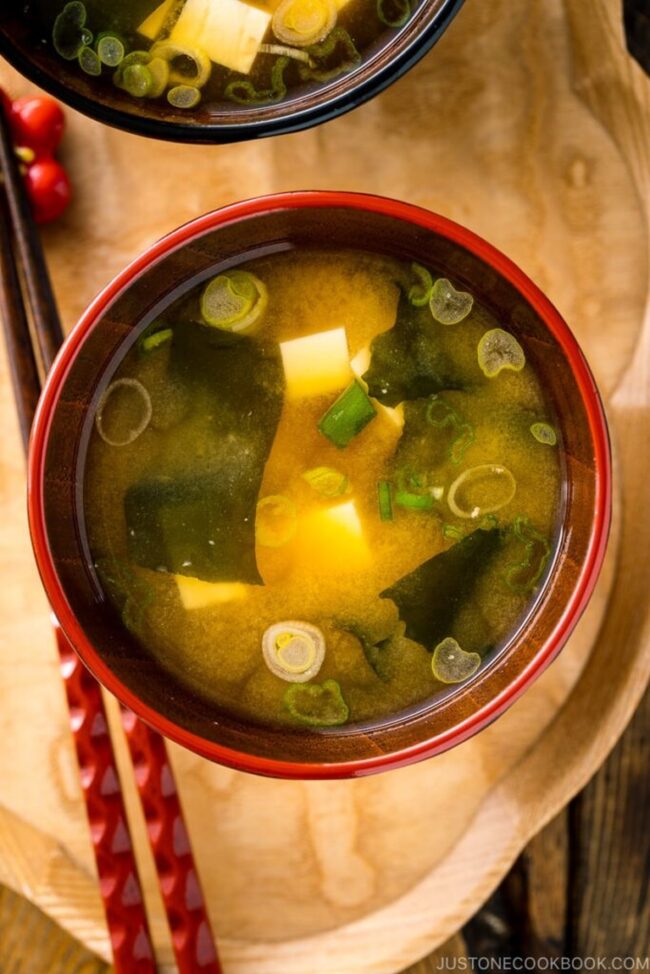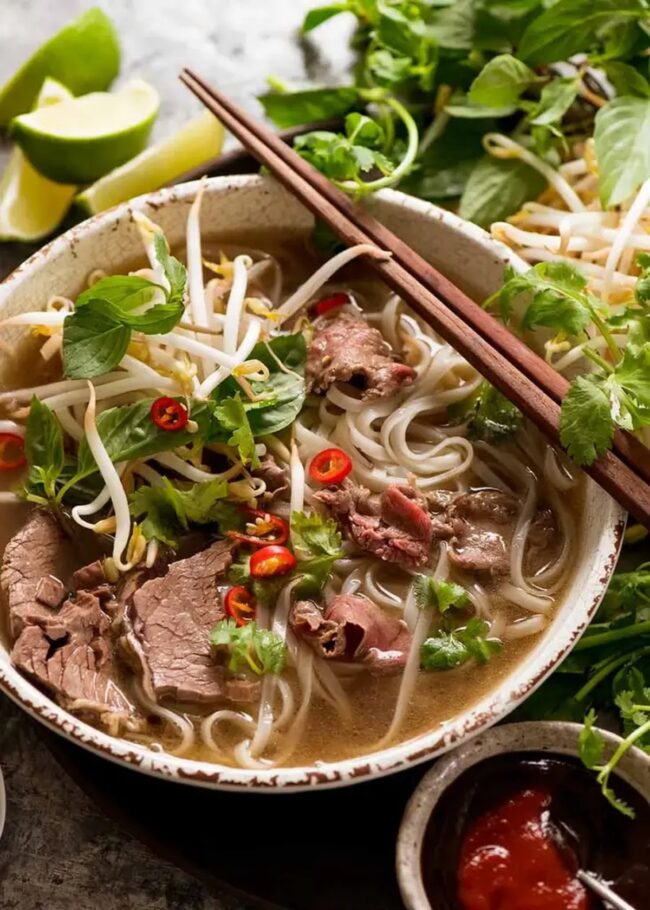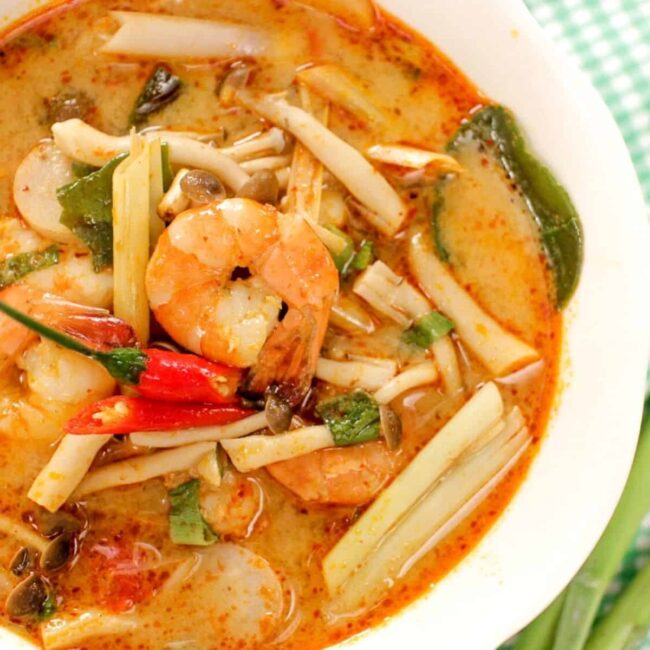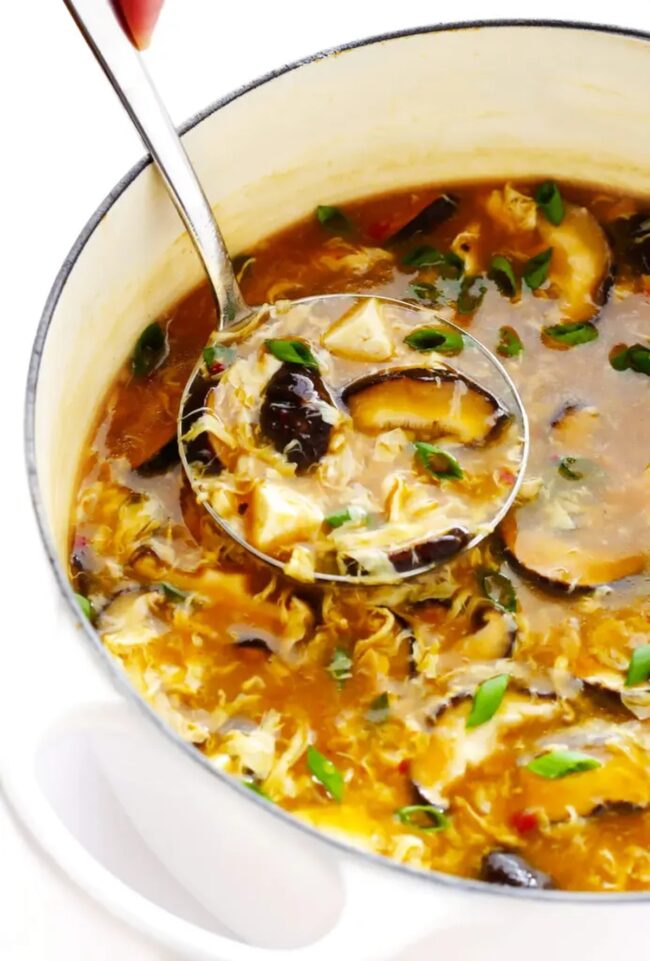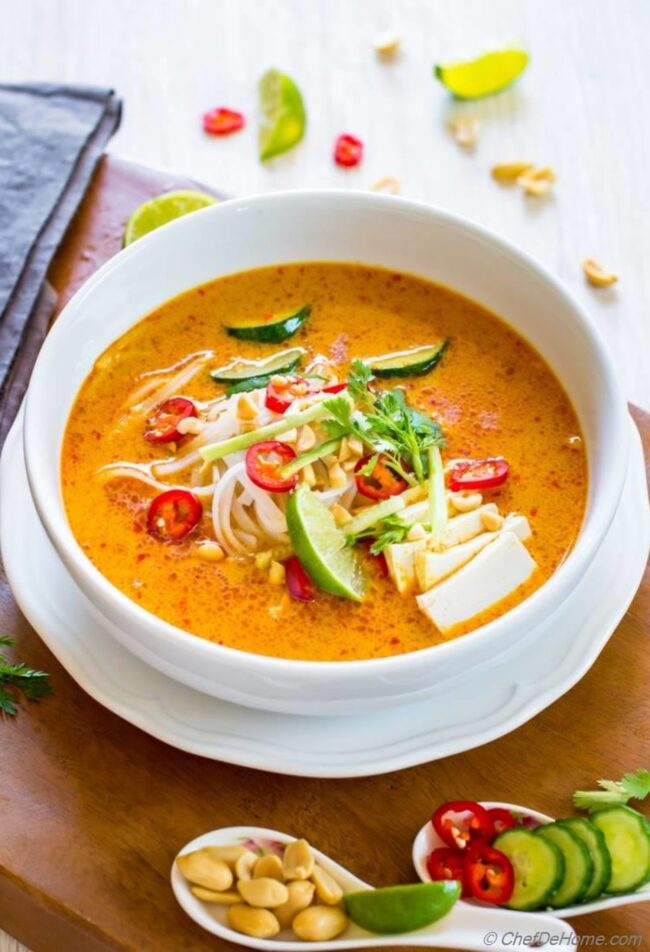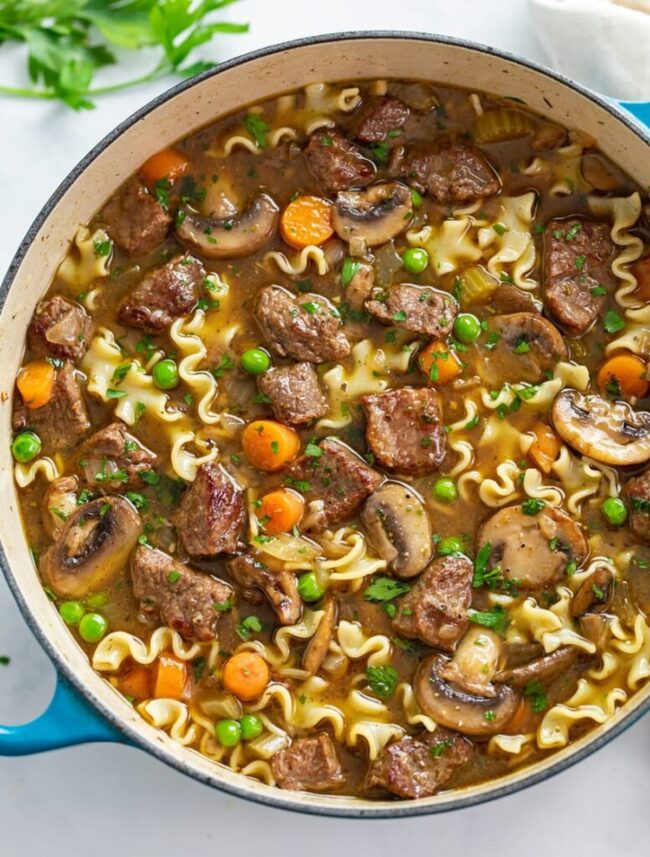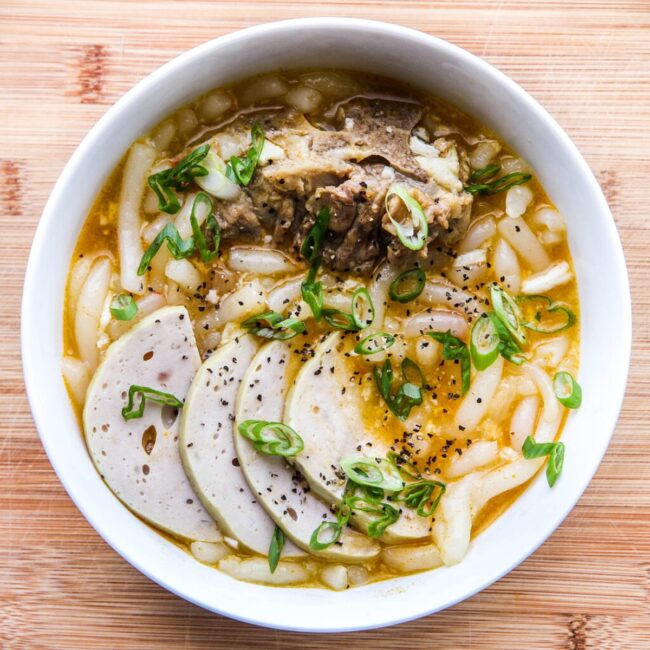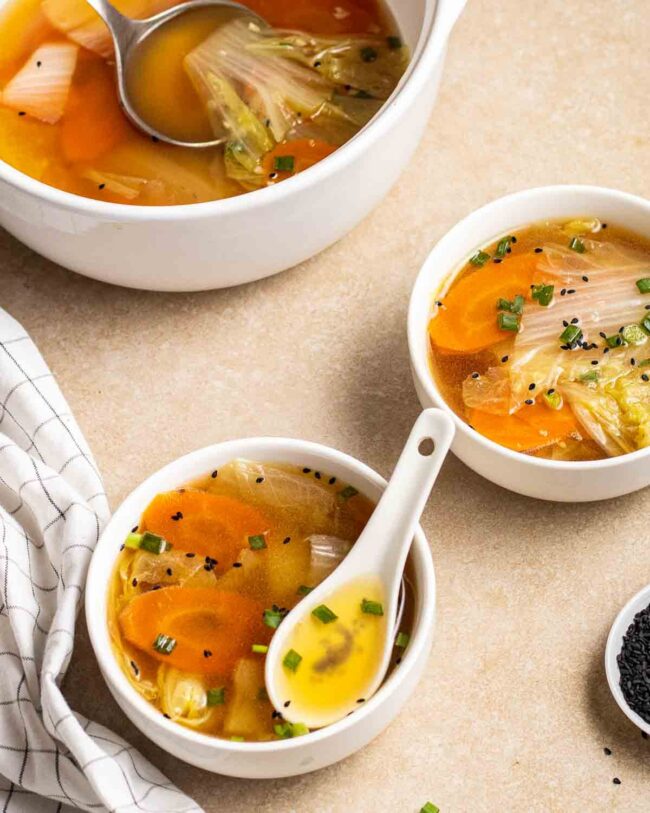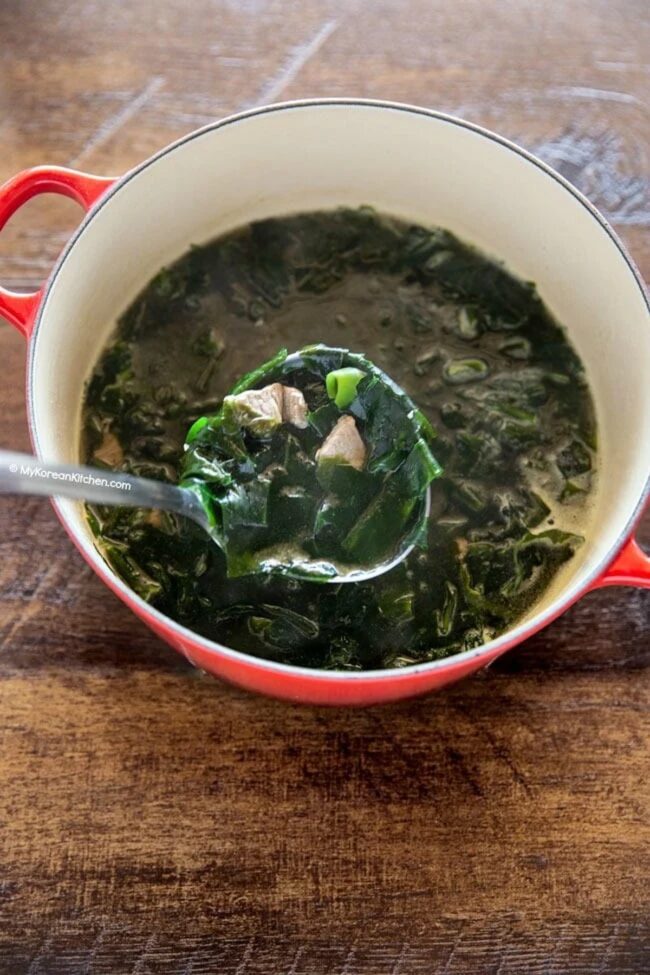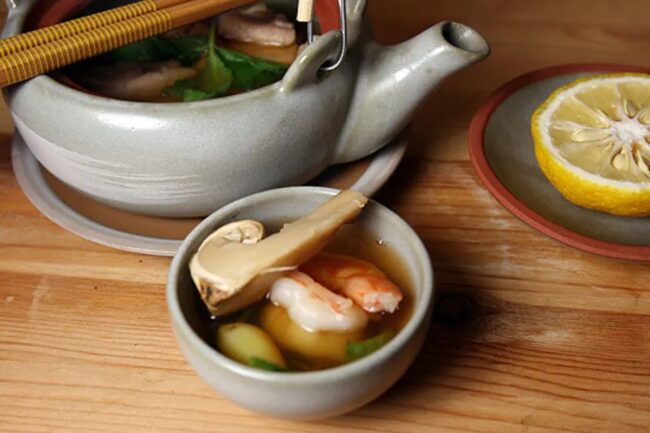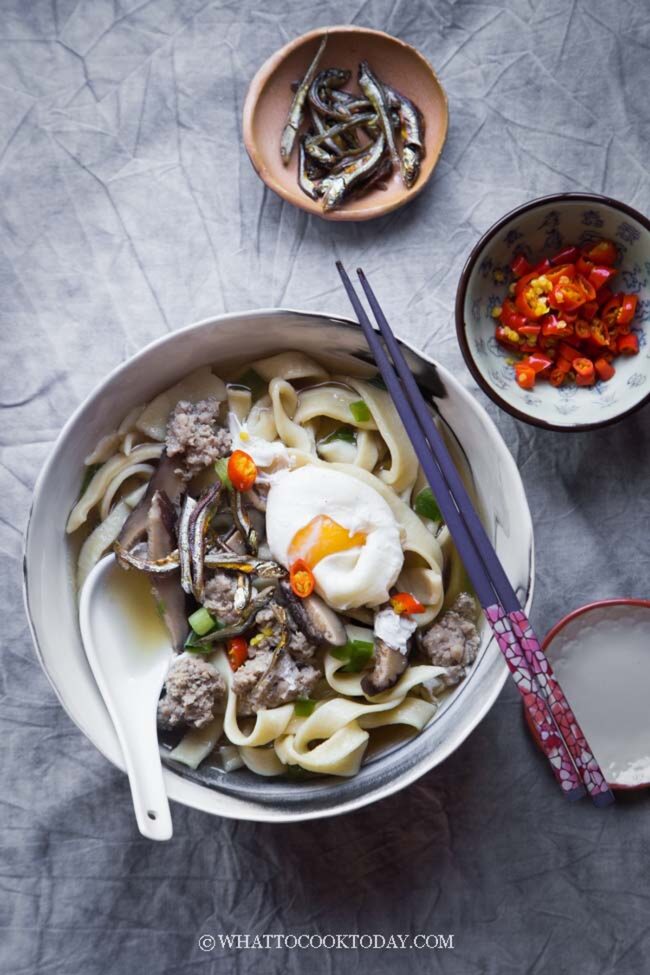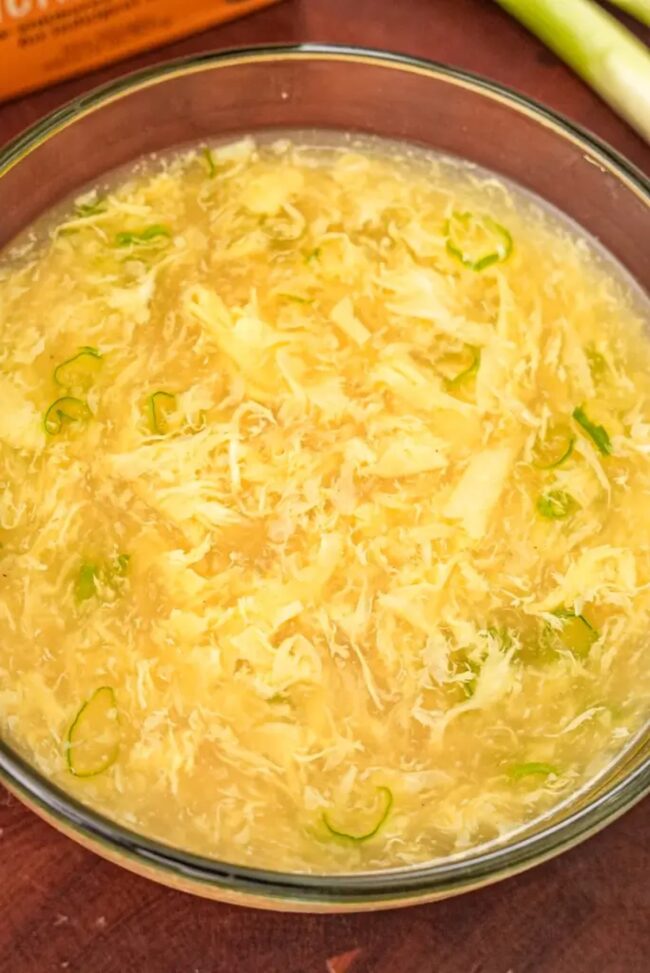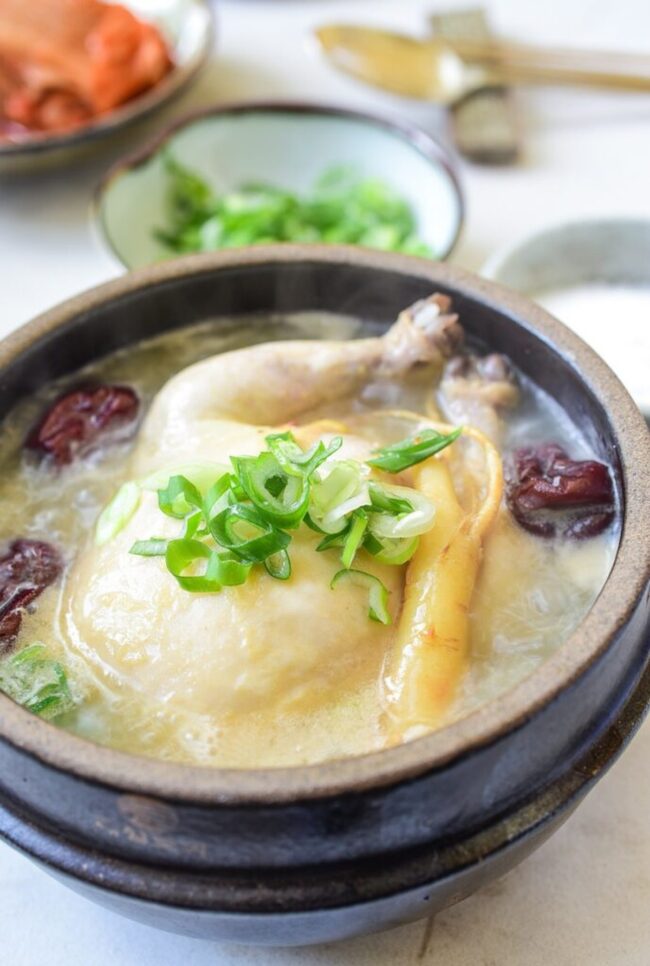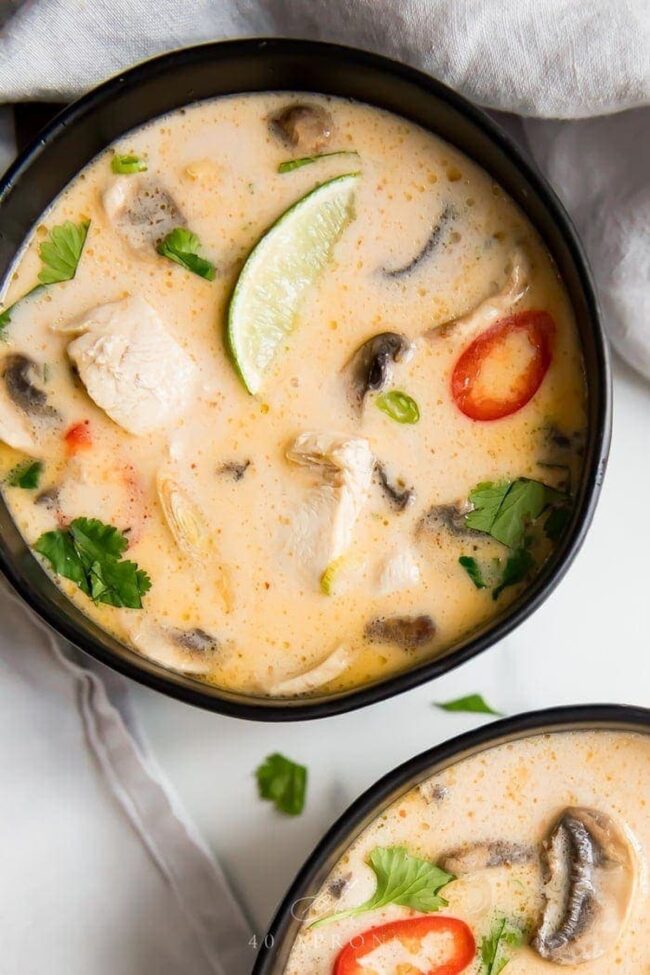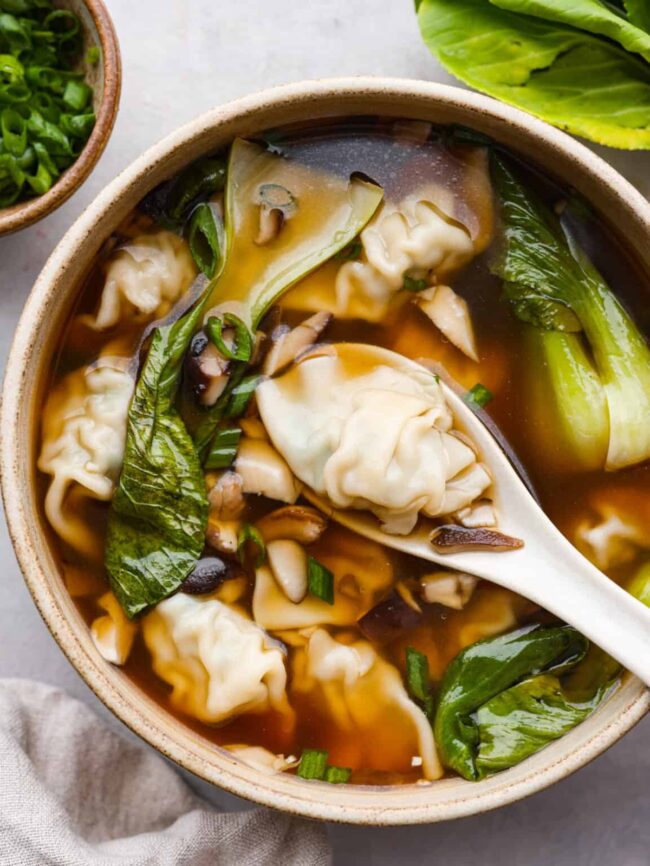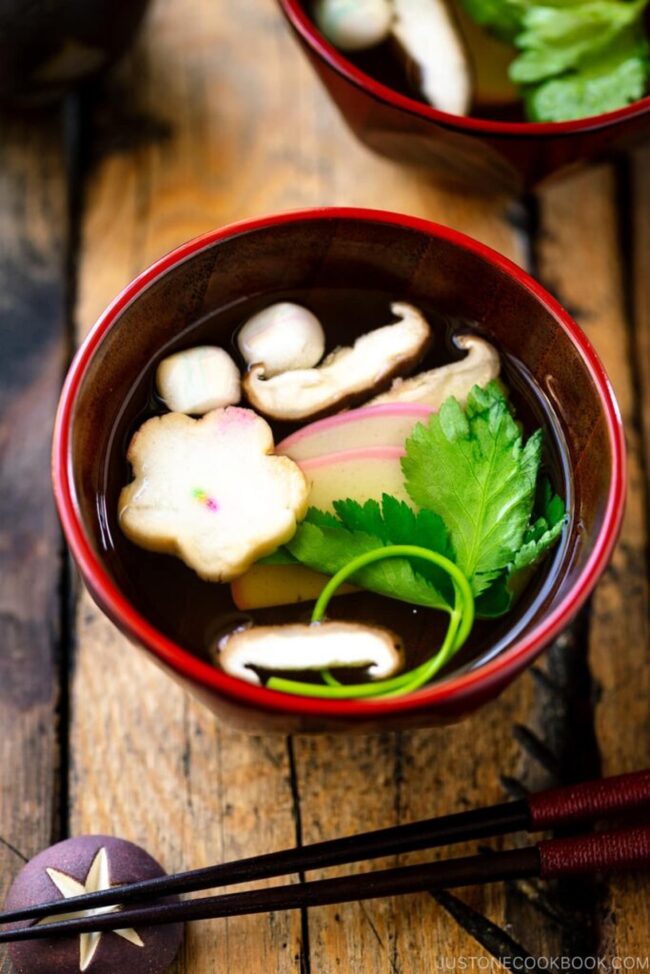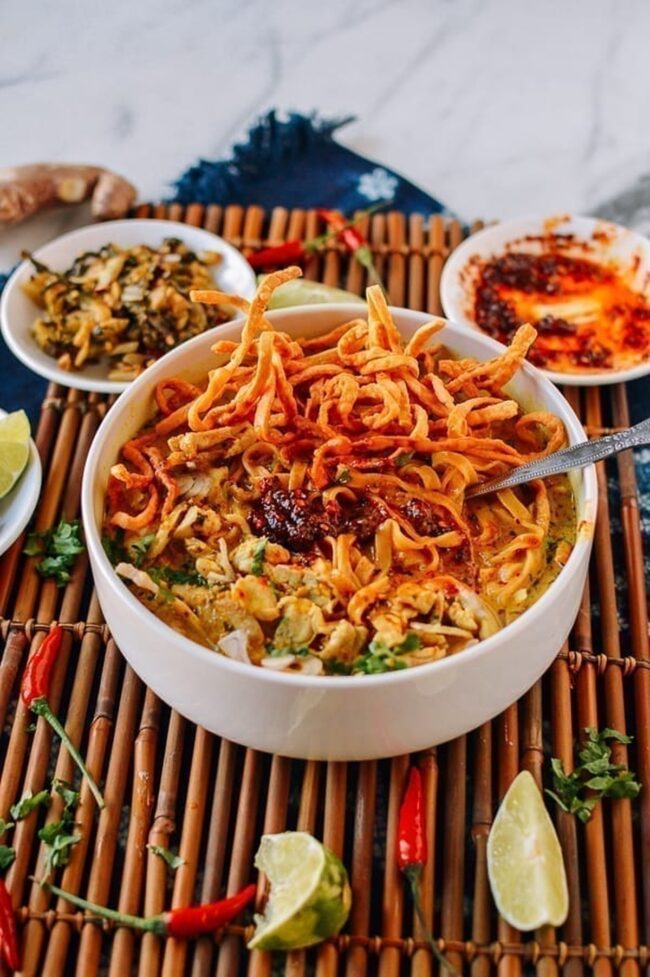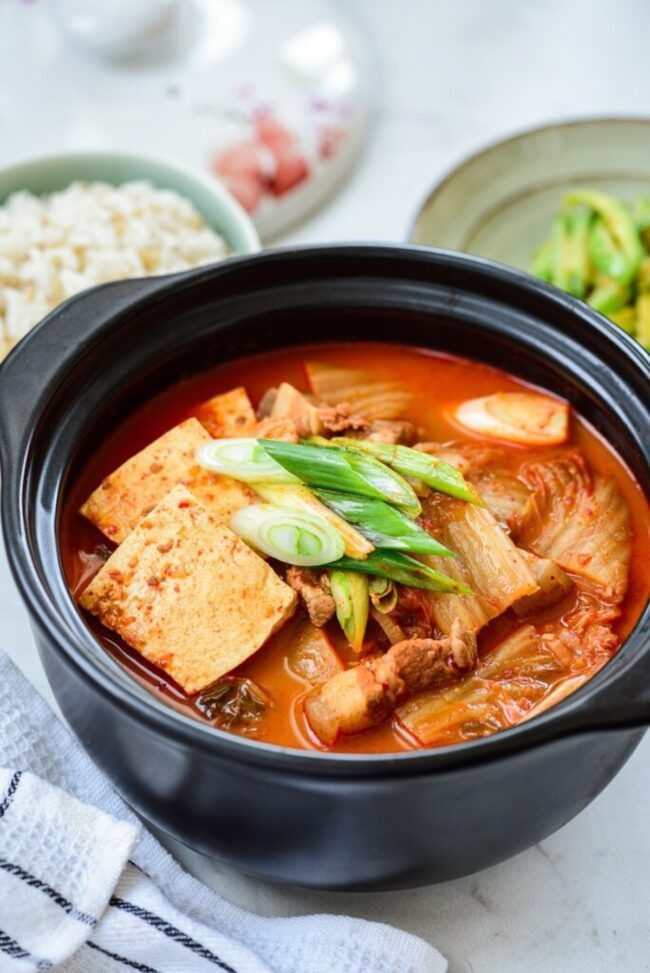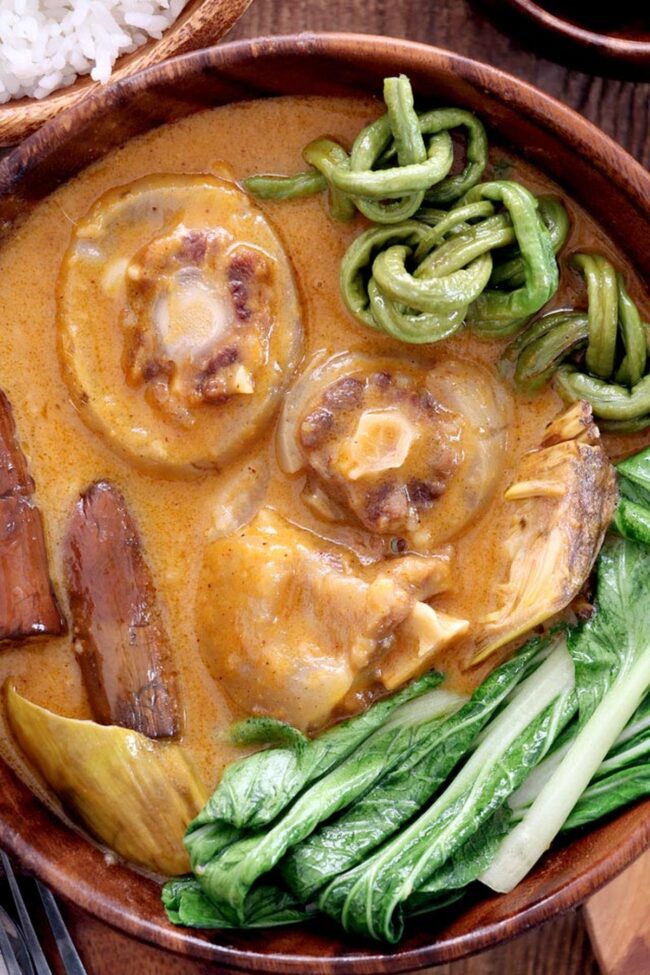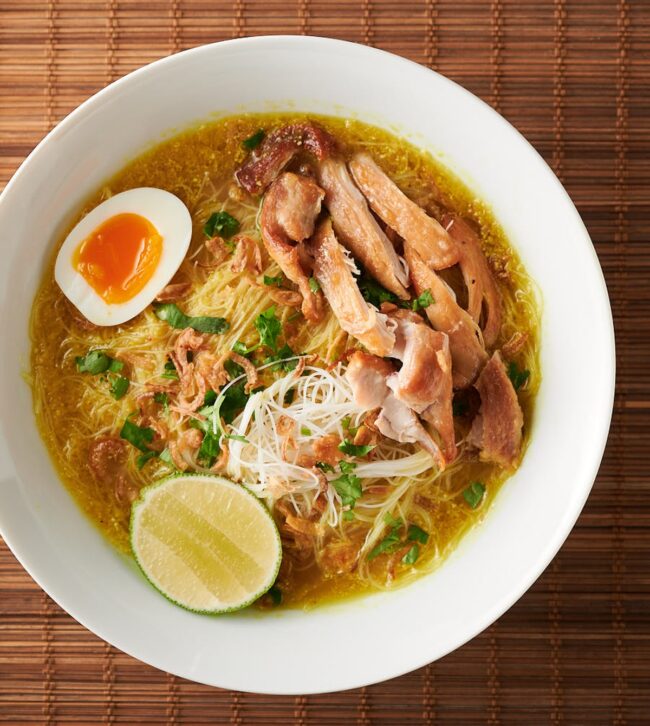25 Simple Asian Soups Everyone Will Love
Asian soups bring vibrant flavors and comforting warmth to any meal.
Their rich variety of ingredients and unique spices create unforgettable bowls of deliciousness.
From exploring traditional recipes to trying modern twists, these soups add an exciting touch to your cooking.
Follow here and discover flavors in 25 recipes below.
Asian Soup Keeps You Well
Asian soups are packed with nourishing ingredients that support overall health. These warm, flavorful bowls bring comfort and wellness to your meals.
Nutrient Dense
Nutritional benefits shine in Asian soups.
Many recipes rely on bone broth, which contributes minerals such as calcium and magnesium.
Leafy greens enhance the nutrient profile, supplying vitamins A, C, and K that promote eye health and aid in blood clotting.
Proteins from tofu or lean meats play a vital role in building and repairing body tissues.
Aromatic garlic and ginger add depth while offering antioxidants that combat cell damage.
A delightful mix of veggies adds freshness to each bowl, creating a wholesome dining experience everyone can appreciate.
Immune Boost
Asian soups offer numerous health benefits and can strengthen your immune system.
Miso soup is rich in probiotics, which promote gut health and enhance immunity.
Chicken soup serves as a remedy for colds, helping to reduce inflammation and alleviate symptoms.
Spicy varieties featuring chili peppers contain capsaicin, known for its ability to relieve congestion effectively.
Mushrooms included in many recipes are excellent at boosting immune cells, aiding the body’s defense against illness.
Seaweed adds iodine to some dishes; this mineral plays a crucial role in maintaining thyroid function and overall wellness.
Gut Health
Light, clear soups provide a gentle option for those with sensitive stomachs.
Many recipes include ginger, known for easing nausea and minimizing bloating while promoting faster stomach emptying.
Fermented ingredients such as kimchi introduce probiotics that enhance gut health significantly.
Hydration remains essential; warm broth helps maintain fluid balance and supports digestion effectively.
Fiber from vegetables in these soups encourages regular bowel movements, ensuring the digestive system functions well.
Overall, Asian soups offer comfort and nourishment when feeling unwell while promoting better digestive health.
Explore 25 Savory Asian Soup Ideas
Asian soups are packed with bold flavors and aromatic spices. They offer a warm and comforting way to enjoy fresh ingredients. Here are 25 ideas to check out!
Miso Soup
A warm bowl of miso soup showcases the heart of Japanese cuisine.
Ingredients include dashi, which is a fish stock, miso paste, tofu cut into small cubes, and fresh green onions.
Begin with heating dashi in a pot while dissolving miso paste in a separate bowl to ensure smoothness.
Once the dashi is hot, mix in the dissolved miso and stir thoroughly.
Afterward, add tofu cubes for texture and sprinkle chopped green onions on top before serving for freshness.
For an extra touch of flavor, consider including seaweed or mushrooms while keeping the soup from boiling after adding the miso to preserve its delicate taste.
Pho
This Vietnamese noodle soup holds a special place in many hearts.
A rich broth, simmered with aromatic spices, forms the base of pho.
Tender rice noodles join beef or chicken to create a hearty dish.
Customization is key; toppings like bean sprouts, basil, lime, and chili peppers add freshness and zing.
Making pho at home can be rewarding; traditional methods require patience while quicker recipes cater to busy schedules without sacrificing flavor.
Enjoying this comforting meal brings warmth throughout the year with every delightful bite packed with vibrant tastes from Vietnam.
Tom Yum Goong
Tom Yum Goong stands out as a beloved Thai soup with a perfect blend of hot and sour flavors.
The dish highlights shrimp, which serves as the main protein.
A rich broth forms the base, created by simmering lemongrass, galangal, and kaffir lime leaves in stock for an inviting aroma.
Mushrooms add texture while shrimp cooks rapidly in this flavorful liquid; both whole or peeled varieties work well based on your choice.
Tangy lime juice brings brightness to the mix alongside Thai chilies that provide heat, adjustable to your liking.
Serving this soup hot with rice creates a fulfilling meal experience that warms the soul.
Hot and Sour Soup
Hot and sour soup features a delightful combination of tangy and spicy flavors that many people adore.
This popular Chinese dish includes ingredients like tofu, mushrooms, and bamboo shoots, each contributing to its distinctive taste.
Vinegar provides the sour note while white pepper adds a kick of heat.
A silky texture comes from the addition of egg ribbons that swirl through the broth.
Cooking starts by simmering these ingredients in flavorful broth before thickening it with cornstarch and adding beaten eggs in a thin stream for richness.
Adjustments can easily be made to enhance spiciness or acidity; some diners prefer an extra dash of vinegar or chili oil on their bowls for added flavor depth.
Laksa
A delicious bowl of laksa features thick rice noodles or vermicelli, often topped with chicken, shrimp, tofu, and bean sprouts.
This spicy noodle soup showcases a delightful mix of Chinese and Malay flavors.
A rich curry coconut milk broth serves as the base, created from a homemade laksa paste that includes ingredients like lemongrass and chilies.
Cooking at home begins with sautéing the laksa paste for extra flavor.
Adding coconut milk and chicken stock transforms it into a comforting broth perfect for any meal.
Preparing proteins and noodles separately ensures that each element shines when combined in your bowl.
Beef Noodle Soup
Different versions of beef noodle soup exist throughout Asia, each showcasing a distinct flavor.
A rich broth serves as the heart of this dish, simmered for hours with aromatic spices such as star anise, cinnamon, and ginger.
Tender cuts of beef like short ribs or shank bring depth to the meal alongside hearty noodles.
Fresh vegetables like bok choy, bean sprouts, and green onions introduce a satisfying crunch.
Customization is easy; toppings such as chili oil or pickled veggies let you tailor the taste to your preference.
This dish offers warmth and comfort in every bowl.
Banh Canh
Banh Canh offers a satisfying experience with its thick, chewy noodles crafted from rice flour and tapioca starch.
The broth shines with various ingredients, often featuring pork or seafood like shrimp, crab, or fish.
Seasoning plays a crucial role; fish sauce combined with salt and sugar creates a balanced taste that enhances the dish.
Cooking the noodles requires attention since they prepare quickly to maintain their ideal texture.
After cooking them separately, place the noodles in a bowl and pour hot broth on top for warmth.
Fresh green onions, cilantro sprigs, and lime juice add brightness to each serving of this comforting soup.
Chinese Cabbage Soup
Warm soup serves as a great dish on chilly days.
Chinese cabbage, or napa cabbage, plays a key role in this recipe.
Carrots and celery can enhance the flavor and nutrition of your meal.
Sauté garlic and onions to start, then add the chopped cabbage along with other veggies.
Broth should be poured in next, allowing it to simmer until everything is tender.
For added protein, consider including small meatballs or tofu while seasoning with soy sauce and sesame oil for an authentic taste that can be ready in just 20 minutes.
Chinese Herbal Soup
The health benefits of Chinese herbal soup are widely recognized, especially for boosting immunity.
Recipes vary greatly; some feature pork bones to enhance flavor and nutrition, while others cater to vegetarians.
Ingredients like goji berries, dried Chinese yam, and lotus seeds play a significant role in this tradition.
A long simmering time helps release the herbs’ beneficial properties into a rich broth that is both nourishing and tasty.
Many people include this soup in their wellness routines or savor it as a comforting meal.
This blend of traditional medicine with everyday nutrition makes it truly special.
Sinigang
Sinigang stands out as a beloved Filipino soup, cherished for its tangy and savory flavor.
The unique base comes from tamarind, which gives the dish its signature sourness.
A variety of meats can shine in this recipe; pork is the most popular choice while beef or fish also add their own charm.
Colorful vegetables like tomatoes, onions, and green beans enhance both taste and nutrition.
Taro root and daikon radish lend extra heartiness to each bowl.
Simmering meat with aromatics before adding tamarind and veggies creates a delicious soup that complements steamed rice beautifully on chilly days.
Korean Seaweed Soup (Miyeok Guk)
Miyeok Guk, a Korean seaweed soup, serves as a nourishing dish often enjoyed during birthdays.
This comforting soup warms the heart and nourishes the body, making it suitable for chilly days or when extra nutrition is needed.
Start with dried seaweed by soaking it in water for 10-15 minutes.
While waiting, chop ingredients like beef and garlic to enhance flavor.
In a pot, cook beef in sesame oil until it's nearly done before adding soaked seaweed along with soy sauce and water; boiling followed by simmering for about 30 minutes completes the dish.
Once finished, ensure that the broth has a slightly milky look and season with salt and pepper before serving hot.
Fish Ball Soup
This comforting soup warms the soul on chilly days.
A simple preparation starts with boiling water and infusing it with ginger for added flavor.
Gently adding fish balls allows them to simmer for about 20 minutes, letting the delicious tastes meld into the broth.
Enhancing this dish can involve including dried seaweed or sliced fish cakes, along with ground meat for extra richness.
Serving it alongside noodles or rice creates a satisfying meal that many enjoy.
Green onions, cilantro, and fried shallots make excellent toppings to finish off this delightful dish beautifully.
Matsutake Dobin Mushi
A delightful experience awaits with Matsutake Dobin Mushi, a Japanese soup presented in a charming teapot.
This dish shines during autumn when matsutake mushrooms reach their peak flavor and aroma.
A rich dashi broth forms the base, enhanced with sake, soy sauce, and salt for seasoning.
Typical additions include tender slices of matsutake along with chicken, shrimp, or fish; some variations introduce ginkgo nuts or greens for extra taste and texture.
Serving involves pouring the steaming soup into small teapots called dobin; sipping directly from the spout while using chopsticks to enjoy solid ingredients adds to its charm.
This elegant offering beautifully showcases the essence of Japanese culinary tradition.
Ban Mian Soup
A warm bowl of Ban Mian brings comfort with its rich flavors.
Handmade noodles, crafted from flour and water, have a delightful chewiness that enhances the experience.
Savory broth made from chicken or pork forms the base, infused with garlic, soy sauce, and sesame oil for added depth.
Toppings like minced pork and fresh bok choy elevate the dish further; mushrooms and scallions add extra layers of flavor.
Personal touches can make this soup unique; swapping in different vegetables or proteins allows for creativity in each bowl.
Enjoying a steaming cup offers both nourishment and satisfaction at any time of day.
Egg Drop Soup
A delightful bowl of egg drop soup comes together in just 15 minutes.
Begin with a pot of simmering chicken stock or water, seasoning it with salt, white pepper, and a hint of sesame oil for added taste.
Thickening the broth requires mixing cornstarch with water before adding it to the pot.
The magic happens when lightly beaten eggs are poured in slowly while stirring gently, forming lovely wisps throughout the soup.
For a splash of color, consider adding yellow food coloring or turmeric to enhance its appearance.
Finish off by sprinkling chopped green onions on top before enjoying this tasty dish!
Samgyetang
Samgyetang offers a nourishing experience as a Korean ginseng chicken soup.
This dish features a young chicken filled with glutinous rice, accompanied by garlic, jujube, and the star ingredient, ginseng root.
The process involves simmering the stuffed chicken in broth until it becomes tender and absorbs rich flavors from the ginseng.
Many people savor samgyetang as an entire meal served steaming hot, even when temperatures rise outside.
Adding salt and pepper can enhance its flavor to suit personal preferences.
Thai Coconut Soup (Tom Kha Gai)
A warm bowl of Tom Kha Gai brings a taste of Thailand right to your kitchen.
This Thai soup features creamy coconut milk combined with tangy and fragrant herbs, creating an inviting aroma.
Chicken, mushrooms, and spices come together beautifully in this dish.
Simmering coconut milk with lemongrass, galangal, and kaffir lime leaves creates a rich base before adding tender chicken pieces.
For added zing, finish it off with fish sauce and fresh lime juice; adjusting the spice level is easy by including Thai chili peppers as desired.
Pairing this delightful soup with rice makes for a satisfying meal on chilly days or whenever comfort food is needed.
Wonton Soup
Hot wonton soup offers a delightful taste of Chinese cuisine right from your kitchen.
This dish includes tender dumplings filled with either pork or shrimp, all swimming in a rich chicken broth.
Wrapping the filling in thin wonton wrappers creates small pouches that seal tightly when pinched.
Cooking occurs in simmering broth, where the wontons rise to the top as they become ready to serve.
Seasoning with soy sauce and adding fresh vegetables like bok choy enhances both flavor and nutrition.
Garnishing with green onions and sesame oil completes this satisfying meal, making it ideal for chilly days or lighter dining experiences.
Japanese Clear Soup
Clear soup holds an essential place in Japanese cooking, known for its light and delicious flavor.
Preparing this broth at home requires just a few basic ingredients.
Start by sautéing garlic, onions, ginger, and carrots in a large pot to create a rich base.
Afterward, pour in chicken and beef broth; allow the mixture to boil before lowering the heat to simmer for about an hour.
Straining removes the vegetables and leaves behind a clear soup that is both tasty and refreshing.
Serving it hot with thinly sliced mushrooms and chopped green onions adds lovely texture on top while enhancing its appeal as either an appetizer or light meal.
Thai Pumpkin Soup
A delicious Thai Pumpkin Soup combines sweet pumpkin and fragrant Thai spices.
This creamy delight surprises the taste buds with a hint of heat.
The preparation involves sautéing onions and garlic in a pot, followed by adding Thai curry paste for flavor enhancement.
Pumpkin puree, coconut milk, and broth join the mix to create a rich base.
After simmering until soft, blending ensures a velvety texture.
A squeeze of lime juice brightens the dish just before serving; garnishing with coconut milk swirls and fresh herbs adds an appealing touch as well.
Birds Nest Soup
This luxurious soup finds its place on special occasions and in upscale restaurants.
Harvesting the nests is challenging, which contributes to its high price.
Made from swiftlet birds' nests, this delicacy features a mild sweetness and a jelly-like consistency.
Preparation involves soaking the nests in water before simmering them with rock sugar for added flavor; some variations include ginger or dates for depth.
Health benefits are often claimed by enthusiasts, although scientific evidence remains lacking.
A taste of this dish may surprise you with its delicate flavor and distinctive texture.
Khao Soi
Khao Soi features a rich coconut curry noodle soup that hails from Northern Thailand.
Its creamy broth pairs wonderfully with chewy egg noodles and crispy fried toppings, adding texture to every bite.
Preparing this dish at home takes just 20 minutes, making it an accessible choice for any meal.
Options for protein include chicken, shrimp, or tofu. The blend of spicy and creamy flavors creates a satisfying experience that highlights the essence of Northern Thai cuisine.
Kimchi Jjigae
A rich, tangy stew awaits with Kimchi Jjigae, a spicy dish ideal for chilly days.
Firm tofu complements the aged kimchi and pork belly in this hearty meal.
Cooking the pork and kimchi together enhances their delicious flavors.
Adding gochugaru and gochujang introduces both heat and depth to the broth.
Simmering allows all ingredients to blend beautifully before serving.
Just before enjoying, toss in cubed tofu for a satisfying finish alongside steaming rice.
Kare-Kare
Kare-Kare offers a heartwarming experience through its rich flavors.
Tender oxtail simmers in a creamy peanut sauce, bringing depth to every bite.
A colorful mix of vegetables, including eggplant, string beans, and banana blossoms enhances the dish's appeal.
Ground peanuts or peanut butter lend a distinctive taste to the sauce.
Enjoying this stew alongside steaming white rice and shrimp paste creates an authentic Filipino meal that brings people together during chilly evenings or family gatherings.
The comforting nature of Kare-Kare makes it truly special on any table.
Soto Ayam
Soto Ayam, an Indonesian chicken soup, offers warmth and comfort with every spoonful.
The dish features tender shredded chicken combined with a delightful mix of spices and herbs.
A broth made from lemongrass, lime leaves, and turmeric creates a fragrant golden liquid that nourishes the body.
Rice noodles or vermicelli serve as excellent accompaniments alongside toppings like boiled eggs, bean sprouts, and crispy fried shallots for extra crunch.
Customizing this versatile soup is easy; adjusting the spices can tailor it to personal preferences.
Ideal for chilly weather or moments when comfort food is needed most, Soto Ayam truly satisfies cravings for something hearty.
Asian Soups’ Key Ingredients
Traditional Asian soups rely on fresh herbs, spices, and proteins for their rich flavors. These key ingredients make them both delicious and nourishing.
Stock & Broth
A rich broth forms the heart of most Asian soups.
Japanese recipes often rely on dashi, which uses kombu seaweed and bonito flakes for flavor.
Many Chinese soups start with chicken or pork bone broth as a base.
For those preferring vegetarian options, mushroom stock delivers an earthy umami taste.
Miso paste enhances Japanese dishes with its fermented soy goodness while Thai and Vietnamese varieties incorporate coconut milk for creaminess.
Bright notes from lemongrass and kaffir lime leaves add refreshing zest to the mix, elevating each bowl's appeal.
Spice Blends
A nutty finish often enhances Korean and Chinese soups with sesame oil added at the end.
Turmeric plays a crucial role in Indian-inspired soups, offering a rich golden hue and earthy taste.
Various forms of chili peppers introduce heat to many dishes, creating a lively kick.
Star anise, cinnamon, and cloves contribute unique flavors that define Chinese soup recipes.
Ginger and garlic are essential ingredients that provide warmth and depth to the broth in numerous Asian cuisines.
Fresh herbs like cilantro, Thai basil, and mint bring brightness while adding delightful aromas to these comforting bowls of soup.
Protein & Veggies
Noodles play a key role in many Asian soups, with varieties like rice noodles, egg noodles, and glass noodles being especially popular.
Common vegetables such as bok choy, napa cabbage, and mushrooms add freshness to each bowl.
Tofu serves as a flexible protein choice in countless recipes.
Seafood lovers enjoy fish balls and shrimp that enhance the flavors of broth-based soups.
Hearty noodle dishes often include thinly sliced beef or pork for added richness.
Unique ingredients like seaweed, bamboo shoots, and water chestnuts provide interesting textures while bean sprouts contribute a satisfying crunch to Southeast Asian options.
Dumplings such as wontons or gyoza frequently complement Chinese-style soups beautifully.

